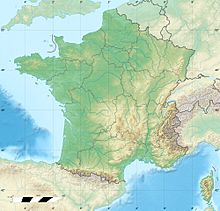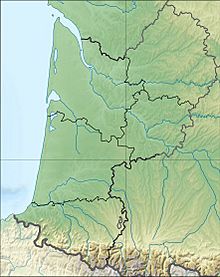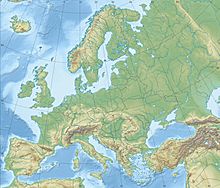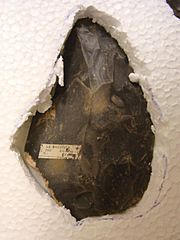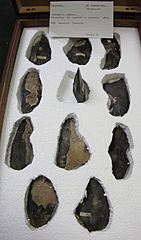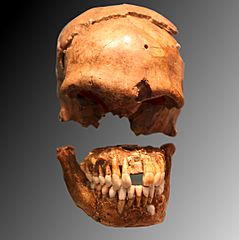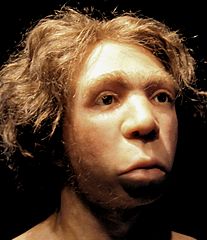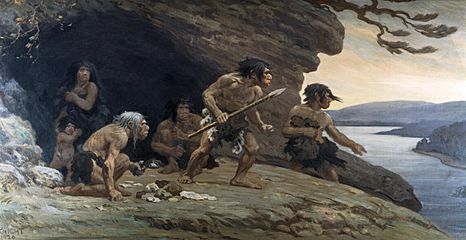Le Moustier facts for kids
|
Le Moustier
|
|

Le Moustier 1 in 1909, before WWII bombing.
|
|
| Location | Peyzac-le-Moustier |
|---|---|
| Region | Dordogne, France |
| Coordinates | 44°59′38″N 1°3′36″E / 44.99389°N 1.06000°E |
| Site notes | |
| Excavation dates | 1863 |
| Archaeologists | Henry Christy, Édouard Lartet. |
| UNESCO World Heritage Site | |
| Part of | Prehistoric Sites and Decorated Caves of the Vézère Valley |
| Criteria | Cultural: (i), (iii) |
| Inscription | 1979 (3rd Session) |
| Area | 0.227 ha (24,400 sq ft) |
Le Moustier is a famous archeological site in France. It has two rock shelters, which are like natural caves. These shelters are found in a village called Peyzac-le-Moustier in the Dordogne region.
Le Moustier is very important because a nearly complete skeleton of a Neanderthal was found here in 1908. The Mousterian tool culture, which describes tools made by Neanderthals, is even named after this site!
The site was first dug up by archaeologists in 1863. An Englishman named Henry Christy and a Frenchman named Édouard Lartet led these early digs. In 1979, Le Moustier became a UNESCO World Heritage Site. It is part of a group of important ancient places in the Prehistoric Sites and Decorated Caves of the Vézère Valley.
Contents
The Le Moustier Neanderthal Skeleton
The Neanderthal skeleton found at Le Moustier is very old. Scientists believe it is about 45,000 years old. This skeleton belonged to a young Neanderthal.
What the Skeleton Tells Us
The skull of this young Neanderthal has some interesting features. It had a large nasal cavity, which is the space for the nose. It also had a less developed brow ridge (the bone above the eyes) and occipital bun (a bump at the back of the skull). These features are common in younger Neanderthals.
The Skeleton's Journey and Damage
After it was discovered, the skull was taken apart and put back together many times. This was done to make copies of it. Sadly, during this process, the skull got quite damaged.
For example, when it was sold to a museum in Berlin, a dentist broke a bone to get to the teeth. Later, the skull was damaged again during bombing in World War II. It was then taken by the Soviet Union but returned to Germany in 1958.
Today, the skull is missing many pieces. Some of its teeth were glued in the wrong places. It was also covered in glue, varnish, and plaster. Because of all this, its scientific value is not as high as it once was. This shows how important it is to handle ancient finds with great care.
-
A flint handaxe found in 1863, now in the British Museum.
See also
- List of fossil sites (with link directory)
- List of hominina (hominid) fossils (with images)


